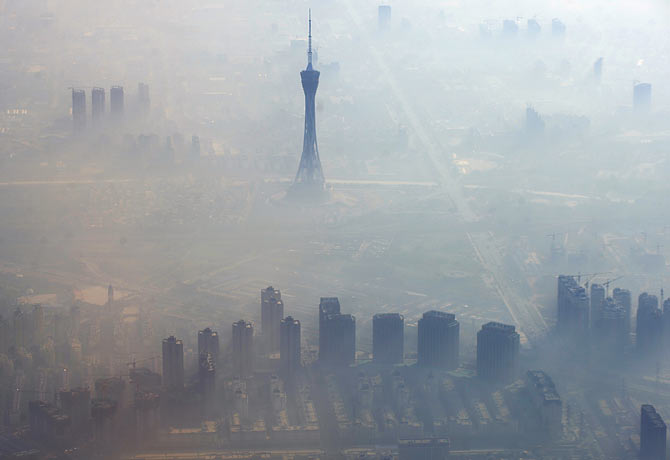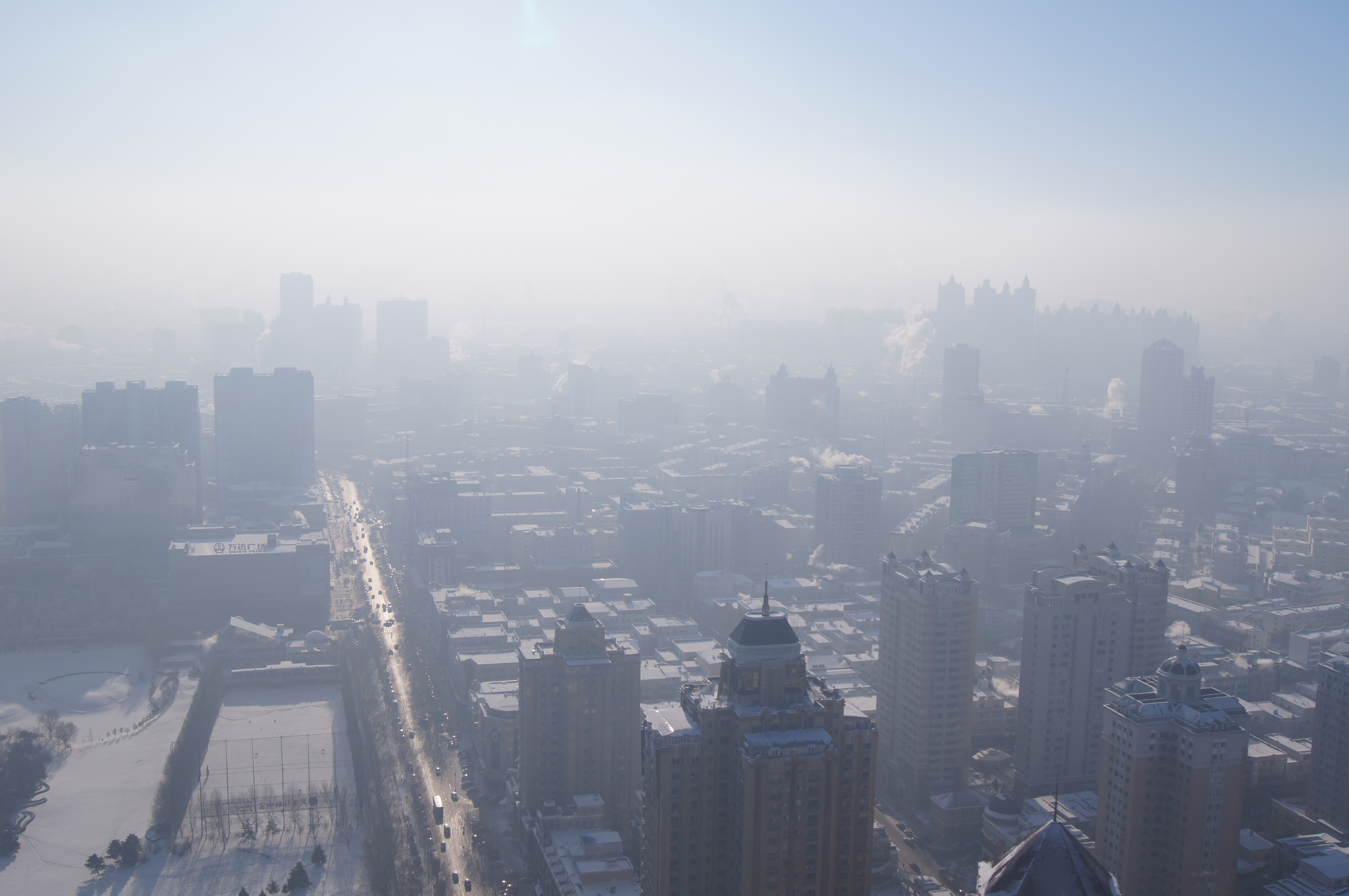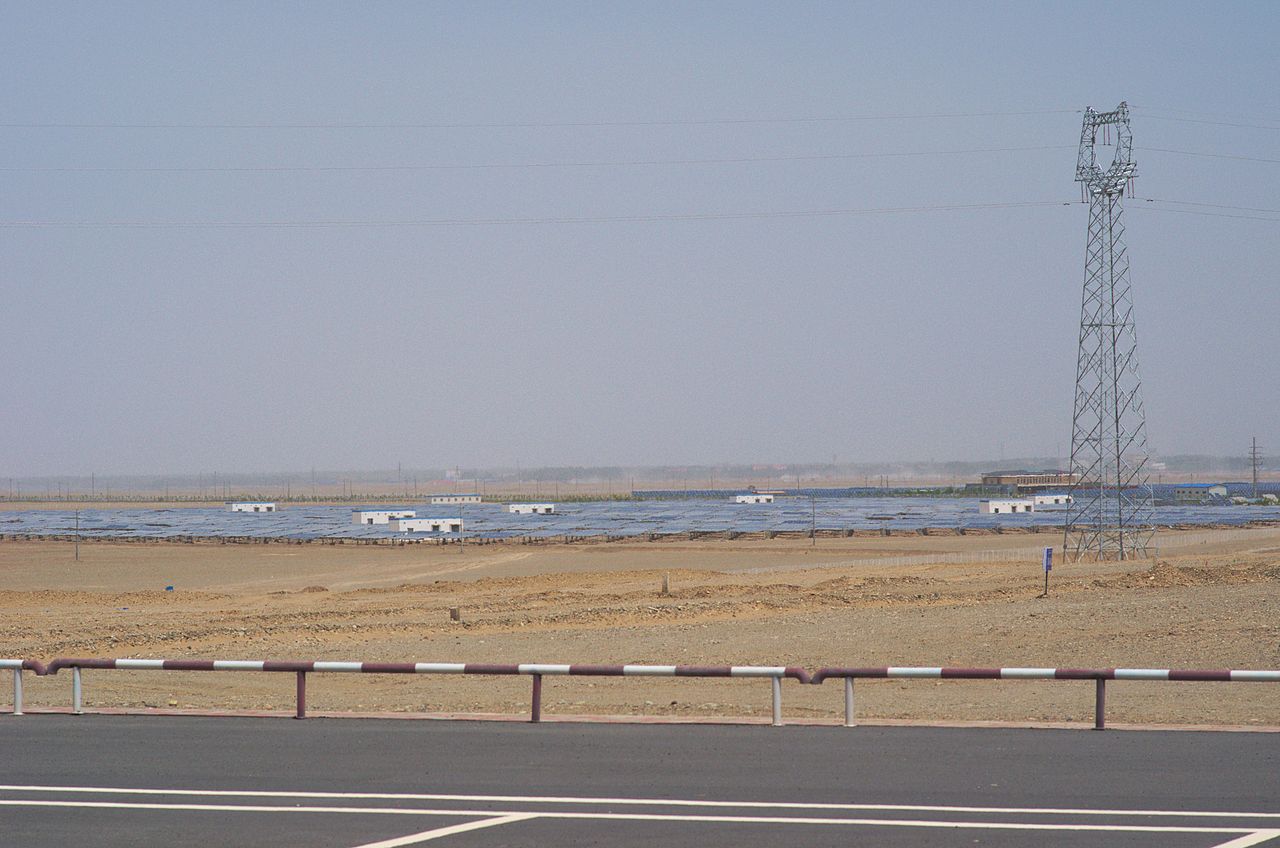This Rampant Polluter Just Broke a Record
By:
Beset for decades by rolling smog clouds caused by coal-burning plants, China has recently embraced solar power, and last year, the country hit a milestone in that area.
China's National Energy Administration announced Saturday that thanks to large-scale installation of photovoltaic cells, the country had more than doubled its output of solar power.
 Wikimedia Commons - wikimedia.org
Wikimedia Commons - wikimedia.org
Compared to other solar producers, like the United States, Japan, Germany and Italy - China's solar power capacity relative to its population is still fairly small. But the increase to 77.42 gigawatts makes China the world's largest producer of solar power by pure capacity. The United States has 35.8 gigawatts of installed capacity, a number that's slowing increasing, but nowhere near China's growth rate.
Smog alerts are a constant fixture of life in China, particularly in major cities. Thick clouds of smog roll in from fields of coal-firing power plants, working to satisfy the country's growing demand for electricity.
The result is factories close down, flights get canceled, port operations disrupted, and populations walking around have been unable to see each other.
 Wikimedia Commons - wikimedia.org
Wikimedia Commons - wikimedia.org
Death from air pollution is incredibly common in China, with researchers believing that particulate matter from burning coal at industrial and power plants caused 366,000 premature deaths just in 2013. Leaders in Beijing are attempting to take action, and have vowed to cut the country's coal consumption by 30 percent in 2017.
At the same time, the United States under President Donald Trump is sending signals that it will withdraw from the Paris climate accord, re-open coal mines, and expand oil drilling.
 Wikimedia Commons - wikimedia.org
Wikimedia Commons - wikimedia.org
Even though Trump is more committed to fossil fuel than previous administrations, experts in the solar industry don't believe the U.S. will permanently lose its status as the biggest producer of solar power.
"In 2016, the U.S. ranked second globally in installed solar capacity - up from third last year, which is the highest the U.S. market has ranked in more than a decade," Dan Whitten, vice president of communications for the Solar Energy Industries Association (SEIA) said in a statement to ATTN:. "While the Chinese market had a record year in 2016, demand in China is expected to decrease somewhat going forward. Our long term projections show the U.S. overtaking the Chinese market in 2021."
If the U.S. does close the gap in solar, it will have to contend with China's plan to spend over $360 billion on renewable energy in the next five years. The country plans to add 20-30 gigawatts of solar capacity each year, and could reach as many as 120 by 2020. This is four times as much capacity as it had at the beginning of 2016, and will represent a significant percentage of the entire world's solar output.
 Wikimedia Commons - wikimedia.org
Wikimedia Commons - wikimedia.org
Even while China's commitment to solar power grows, the country is still a massive polluter. Solar still accounts for just 1 percent of Chinese power consumption, and China still burns almost as much coal as the rest of the world combined.
But the Chinese solar boom is a step in the right direction, and represents an area where the U.S. and China could, theoretically, agree.
"The more solar is deployed, the bigger its reduction of carbon emissions becomes, resulting in major economic and environmental benefits," SEIA's Whitten said. "In that regard, we don’t see ourselves as competitors with China. When it comes to reducing greenhouse gases, the more use of solar worldwide, the better."
